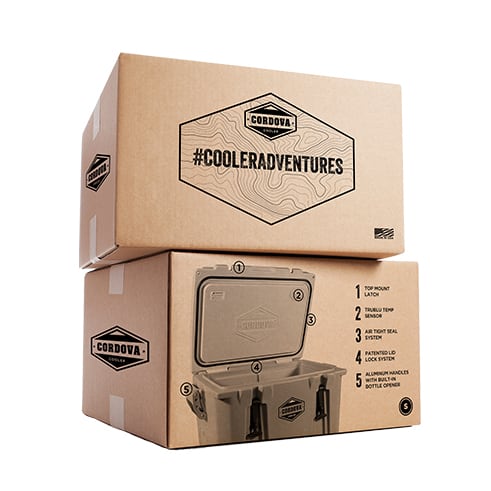Deepfake Videos in Marketing | What Brands Should Know
August 17, 2022
In marketing, image is everything. But what if that image isn’t real? And, does it even matter?
Most people are familiar with the usual apps and filters to adjust or clean up images, and for some more seasoned photographers or designers, using Photoshop to do heavier edits in post production. But these two concepts pale in comparison to the newest visual trick — deepfakes.
What are deepfakes, and how can they be used for both positive and nefarious purposes? Let’s find out.
Deepfake Basics
Simply put, a deepfake is an image or video in which an image of one person is superimposed over another. However, this isn’t done in an obvious, amateur or ironic way. In fact, deepfakes are known for being so high-quality that it’s often impossible for viewers to tell if they are looking at something that’s authentic or not. One of the more well-known examples of deepfakes in pop culture is the use of deepfake technology to replicate Princess Leia and Grand Moff Tarkin in the Star Wars Rogue One film, which left viewers in amazement at how the filmmakers were able to pull it off. But, even since that movie, technology has continued to advance and improve at a dramatic pace.
Given the persuasive abilities of deepfakes, it’s not hard to see where this technology can take a dark turn. The potential negative implications for deepfakes are numerous. In the wrong hands, deepfakes can cause tremendous damage in terms of misleading the public, slandering others, and misrepresenting individuals or brands. That’s definitely something brands — and people as a whole — need to be aware of and watch out for. For potential political use alone, the lingering effects of convincing deepfake imagery to mislead or slander opponents could be substantial.
Deepfakes can also be used for more conventional and beneficial executions in marketing. What can deepfakes accomplish, and what should brands know?
Deepfakes in Marketing
Marketing has always leveraged cutting-edge digital technology to communicate messages visually. Deepfakes, though, aren’t just another piece of technology – it’s an art form that, when used creatively and in the appropriate context, can be a powerfully influential or impactful tool.
We’ve seen similar technology used in advertising in a humorous or comedic sense, such as talking babies and animals. But those were obvious and often intentionally crude applications of CGI. Deepfakes can now go even deeper. And, their power should be managed with care.
Because deepfakes are increasingly more difficult to discern from reality, they’re best used when there’s something familiar on the screen, and when there’s something important (but not detrimental) at stake. When the viewer is already drawn in and invested, that’s when deepfakes can be most effective in influencing audiences or consumers behavior.
There are two recent notable examples of deepfakes that have been particularly impactful. One is an Indian ad for Pepsi products, which uses deepfake videos of famous Bollywood movie characters to stage an interaction between one character and another, both played by the same actor at different times.
In this case, the deepfake works because the viewer already knows who the characters are and why they should care about this premise. It’s the visual representation of something people have imagined in their minds, drawing them into the ad. Whether or not the deepfake is directly related to the soda it’s trying to sell is irrelevant. It’s an effective use of deepfake technology because it doesn’t need to be explained, and it’s playing upon something the viewer already knows.
A second example of deepfake technology at work is a Dove ad with an entirely different message. Dove’s ad also features a face-off of sorts, but it’s the opposite of the Pepsi ad. The Dove ad features teenage girls watching videos of influencers providing beauty inspiration and advice.
However, thanks to deepfake technology, the influencers are replaced by images of the mothers of the teens giving the same advice — much of which is unhealthy, dangerous, and which promotes a highly damaging beauty standard. Much like the Pepsi ad, the deepfake in the Dove ad is surreal, but for an entirely different reason.
Here, any viewer can see just how shocking it is to see a trusted person dispense careless and reckless advice. It illuminates both the unattainable standards and the pressure put on young girls to reach these levels — something that might not be clear under normal circumstances. The deepfake helps to drive the message and make a true statement about beauty.
The two ads are similar, but in an important way, they’re very different. Pepsi used a deepfake to intrigue viewers and get them interested in an ad, and their soda pitch is an afterthought. For Dove, though, there isn’t a sales pitch at all. If anything, Dove — a beauty company — stands to potentially lose out on sales. But the message is powerful and undeniable. But as those teen girls are impacted by the ad and develop a healthier self-image, they may turn to Dove products in the future.
What Brands Should Know About Deepfakes
The technology behind deepfakes is relatively new, which means it may be unavailable and prohibitively expensive for some small businesses. However, that won’t be the case forever. It won’t be long before deepfakes are easier to produce and, therefore, more commonplace. It’s good to have an idea of how you might approach deepfakes when that time comes.
Potential Applications
We’ve seen examples of companies using deepfakes for fantasy purposes and to engage in real talk with the audience. But there’s more that can be done with deepfakes. For example, a message about diversity could combine multiple ethnicities or genders into one image. Just the same, a brand could combine multiple flags into one to create a global mosaic. As the technology evolves, there will be even more uses for deepfakes, from comedic to serious and everything in between.
Availability
Your brand might not be ready to utilize deepfakes just yet. But when you are, there will be plenty of resources at your disposal. A company known as Hour One is already enlisting people who are willing to let the organization use their faces in deepfakes. These could be the building blocks for future marketing campaigns, or they could be the bodies on which more famous faces are overlaid. Time will tell what the true applications of these models will be, but businesses that want to use deepfakes will have no shortage of options.
Unethical Marketing
As mentioned earlier, there exists the potential for businesses to use deepfakes for nefarious purposes. These can include fake celebrity endorsements, false claims about products, and bogus product features, among other potential lies. Deepfake influencers can even present as legitimate influencers. No business should ever engage in these fraudulent forms of advertising, no matter how tempting it may be. Engaging in false advertising is not only illegal, but it will erode the trust of your audience, who will be slow to forgive you for misleading them.
While still an emerging technology and creative tactic, deepfakes are slowly becoming a common and effective strategic tool in marketing when executed properly. And, the time to pay attention is now. Consider how you and your brand might use deepfakes strategically in your industry or your next campaign. If you’d like to learn more about deepfakes and how you might be able to make use of this technology, contact us at Commit Agency today.




























